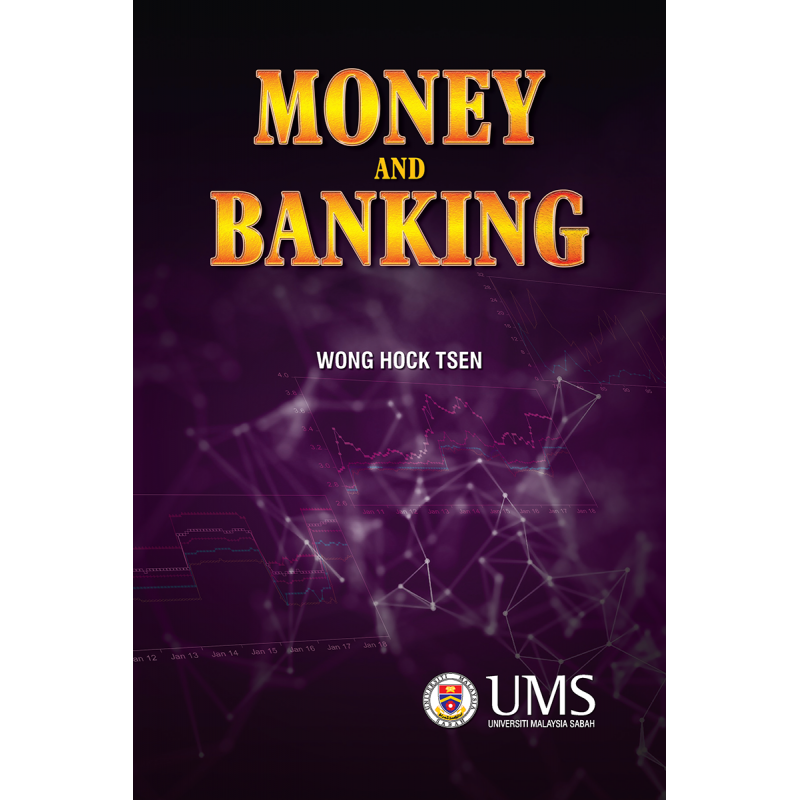



Author: Wong Hock Tsen
Year Published: 2019
ISBN: 978-967-2166-61-0
Money and banking are about money, payment systems, banking and the central bank in an economy. The information on money and banking enables economic agents to make a better financial decision in the economy. Money is an exchange for goods and services and to settle debts. There is a link between the money supply and the monetary base.
The money supply will increase or decrease when the monetary base or the money multiplier increases or decreases. The value of money will deteriorate fast when inflation is high. A payment system is an arrangement for exchange, which can be categorised into store-of-value systems and account-based systems. Asymmetric information can lead to adverse selection and moral hazard problems and thus, the asymmetric information problem can trigger the financial crisis problem. Banks can be commercial banks, investment banks and Islamic banks. Banks pool savings, provide safekeeping, accounting services and the payment systems, provide liquidity, diversify risk and provide financial information. Banking development is said to have a vital role in economic growth. Balance sheet management is important for the smooth running of the business of banks. Theory of term structure of interest rate attempts to explain the shape of the yield curve over time. Interest rate risk is a significant risk in the bank as a change in interest rate can affect both sides of the balance sheet of the bank. Financial innovation and bank consolidation are important issues in money and banking. The central bank manages monetary policy and oversees the financial system in an economy. The independence of the central bank can be a goal and operational independence.
There are pro and con for the independence of the central bank and for the central bank to prick asset price bubble. This book can be divided into three main parts, namely money and the payment systems, banking and central bank. Chapter 1 to Chapter 2 explains money and the payment systems. Chapter 3 to Chapter 7 are banking. Chapter 8 is the central bank. Chapter 9 is concluding remarks. This book provides some fundamentals in money and banking for the economic agents, namely households, firms, governments and foreigners.
Memiliki dan merasai kebahagiaan adalah hak milik setiap insan. Bahagia tidak terhad kepada...
Buku ini merupakan himpunan penulisan tentang pelbagai topik mengenai kebudayaan megalitik...
Buku ini membincangkan asas pengetahuan berkenaan bidang kaunseling kepada pelajar yang baharu...
This book is a comprehensive information with basic knowledge about different aspects...
Buku biografi ini membincangkan kisah kehidupan Tun Razak dengan meneliti peranan dan...